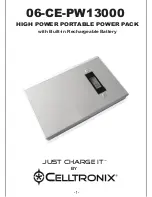
2-10
BOP HIPWR 031912
The stabilized d-c power supply is definitely not an ideal voltage or current source, and practical
interfaces definitely fall short of the ideal. All voltage-stabilized power supplies have a finite
source impedance which increases with frequency, and all current-stabilized power supplies
have a finite shunt impedance which decreases with frequency. The method of interface
between the power supply output and the load must, therefore, take into account not only the
size with regard to minimum voltage drop, but the configuration with regard to minimizing the
impedance introduced by practical interconnection techniques (wire, bus bars, etc.). The series
inductance of the load wire must be as small as possible as compared to the source inductance
of the power supply: although the error sensing connection to the load compensates for the d-c
voltage drop in the power leads, it cannot compensate for the undesirable output effects of the
power lead inductance. These lead impedances (both power and sensing leads) are especially
important if the load: is constantly modulated or step-programmed; has primarily reactive char-
acteristics; or where the dynamic output response of the power supply is critical to load perfor-
mance.
2.5.5
LOAD CONNECTION - GENERAL
Load connections require wires that are properly rated for the nominal output current of the unit.
Load connections to the BOP power supply are achieved via the OUTPUT and COMMON bus
bar-type terminals located on the rear panel. A barrier strip is provided at the rear panel for con-
nection of the sense wires to the load (for remote sensing or multiple unit applications).
CAUTION: NEVER CONNECT THE LOAD TO THE SENSE TERMINALS. MONITORING
INSTRUMENTS (E.G., DVM, ETC.) ARE THE ONLY EXTERNAL EQUIPMENT
THAT MAY BE SAFELY CONNECTED TO THE SENSE TERMINALS.
CAUTION: NEVER CONNECT THE BOP OUTPUT TERMINAL (OR THE LOAD TERMINAL
TIED TO THE OUTPUT TERMINAL) TO EARTH-GROUND. OTHERWISE, IF
THE CONTROLLING DEVICE IS GROUNDED, THE BOP CAN BE DAMAGED
BY THE PROTECTION LIMIT OUTPUT CURRENT FLOWING INSIDE THE BOP
ALONG THE PROGRAMMING SIGNAL RETURN PATH.
CAUTION: DO NOT CONNECT BOTH THE LOAD AND THE PROGRAMMING DEVICE
RETURN (COMMON) TO EARTH-GROUND POTENTIAL. OTHERWISE, IF THE
COMMON POWER CONNECTION BETWEEN THE BOP AND THE LOAD IS
LOST, THEN THE BOP CAN BE DAMAGED BY OUTPUT CURRENT FLOWING
INSIDE THE BOP ALONG THE PROGRAMMING SIGNAL RETURN PATH.
NOTE
REGARDLESS OF OUTPUT CONFIGURATION, EITHER LOCAL OR REMOTE OUT-
PUT SENSE LINES MUST BE CONNECTED FOR OPERATION.
1. OBSERVE POLARITIES: The
OUT S
sensing wire must be connected to the
OUT-
PUT
load wire, and the
COM S
sensing wire must be connected to the
COMMON
load
wire.
2. IF LOCAL SENSING IS USED, INSTALL LINKS (see Figure 2-2).
CAUTION: THE SAFETY FEATURES INCORPORATED INTO THE BOP TO HANDLE
ENERGY FROM ACTIVE LOADS ARE UNABLE TO PROTECT THE POWER
SUPPLY OR THE LOAD IF INPUT POWER TO THE BOP IS LOST OR IF THE
BOP MALFUNCTIONS. IT IS RECOMMENDED THAT THE USER MONITOR
“POWER OK” FLAG PINS 3 AND 4 OF THE EXTERNAL PROTECT PORT (SEE
TABLE 2-4) AND IMPLEMENT A FAST-ACTING MEANS OF DISCONNECTING
CAPACITIVE LOADS OR CROWBARRING INDUCTIVE LOADS TO PREVENT
DAMAGE TO BOTH THE BOP AND THE LOAD IN THE EVENT OF INPUT
POWER LOSS.
Summary of Contents for BOP-MG
Page 2: ......
Page 10: ......
Page 20: ...x BOP 1K 031912 FIGURE 1 1 HIGH POWER BOP SERIES POWER SUPPLY...
Page 37: ...BOP HIPWR 031912 1 17 FIGURE 1 3 BOP OUTPUT CHARACTERISTICS...
Page 53: ...BOP HIPWR 031912 2 15 FIGURE 2 4 PARALLEL CONFIGURATION LOCAL SENSING TYPICAL...
Page 54: ...2 16 BOP HIPWR 031912 FIGURE 2 5 PARALLEL CONFIGURATION REMOTE SENSING TYPICAL...
Page 64: ......
Page 132: ......
Page 192: ......
















































